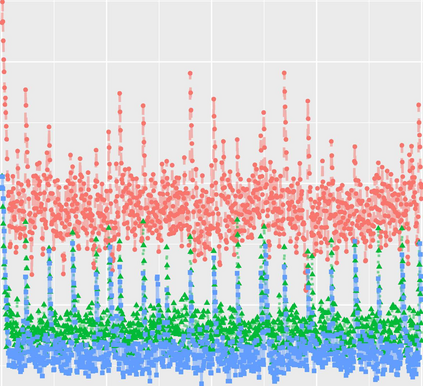Digital Twin systems are designed as two interconnected mirrored spaces, one real and one virtual, each reflecting the other, sharing information, and making predictions based on analysis and simulations. The correct behavior of a real-time Digital Twin depends not only on the logical results of computation but also on the timing constraints. To cope with the large amounts of data that need to be stored and analyzed, modern large scale Digital Twin deployments often rely on cloud-based architectures. A significant portion of the overall response time of a Digital Twin is spent on moving data from the edge to the cloud. Therefore, implementing Digital Twins using cloud-fog architectures emerges as an alternative to bring computing power closer to the edge, reducing latency and allowing faster response times. This paper studies how suitable the use of a cloud-fog architecture is to handle the real-time requirements of Digital Twins. Based on a realistic implementation and deployment of Digital Twin software components, it is possible to conclude that the distribution of Digital Twins in a fog computing setup can reduce response times, meeting its real-time application requirements.
翻译:数字双胞胎系统的设计是两个相互联系的镜像空间,一个是真实的,一个是虚拟的,每个反映另一个,分享信息,并根据分析和模拟作出预测。实时数字双星的正确行为不仅取决于计算的合理结果,而且还取决于时间限制。为了应对需要储存和分析的大量数据,现代大规模数字双星部署往往依靠云基结构。数字双星的整个反应时间大部分花在将数据从边缘移动到云层上。因此,利用云层-泡沫结构实施数字双胞胎系统是利用云层结构使计算能力更接近边缘的替代方法,可以减少延缓时间,并允许更快的反应时间。本文研究了使用云层-泡沫结构如何适合处理数字双星的实时需求。根据数字双星软件组件的实际实施和部署,可以得出结论,在云层计算中的数字双子的分布可以缩短反应时间,满足实时应用的要求。









